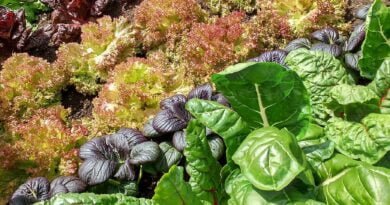How to Grow Sage: A Guide to Health Benefits and Meal Ideas
Sage is a versatile and flavorful herb that has been used in cooking and medicine for thousands of years. It belongs to the mint family and is known for its distinctive aroma and taste. Sage is also packed with health benefits, making it a valuable addition to any diet. In this article, we’ll explore how to grow sage and the many ways you can use it in your cooking.
- Choose the Right Location: Sage thrives in full sun, so choose a location that gets at least 6-8 hours of sunlight a day. Sage can tolerate some shade, but too much shade can lead to leggy growth and poor flavor.
- Prepare the Soil: Sage prefers well-draining soil with a pH of 6.0-7.0. If your soil is heavy or compacted, add organic matter such as compost, aged manure, or peat moss to improve soil structure and fertility. You can also mix in a slow-release fertilizer according to the manufacturer’s instructions.
- Plant the Seeds or Seedlings: Sage can be grown from seeds or from cuttings. If you’re starting from seeds, sow them indoors 6-8 weeks before the last frost date or outdoors in the spring after the last frost date. To start from cuttings, take 3-4 inch cuttings from a mature sage plant and plant them in a well-draining potting mix. Keep the soil moist and place the pot in a warm, bright location.
- Water Regularly: Sage needs regular watering to keep the soil moist, but not waterlogged. Water deeply once a week, or more often in hot, dry weather. To avoid fungal diseases, water from the bottom rather than from above.
- Mulch the Soil: Mulching helps to retain soil moisture, suppress weeds, and regulate soil temperature. You can use organic mulches such as straw, shredded leaves, or grass clippings. Spread the mulch about 2 inches deep around the sage plants, but keep it away from the stems to prevent rot.
- Fertilize: Sage is a light feeder, which means it doesn’t need a lot of fertilizer to grow well. You can feed sage with a balanced fertilizer once a month, or use a slow-release fertilizer at the beginning of the season. Avoid over-fertilizing, as this can lead to weak growth and poor flavor.
- Prune Regularly: Pruning is important for keeping sage plants bushy and compact. You can prune the plants by pinching off the tips of the stems or by cutting back the entire plant by one-third in the spring. This will encourage new growth and prevent the plant from getting too woody.
- Harvest Regularly: You can start harvesting sage leaves as soon as the plant is large enough to use, usually after 2-3 months. Snip the leaves from the outer edges of the plant, leaving the center leaves to continue growing. Be sure to leave at least 2 inches of stem when you harvest, to encourage new growth.
By following these simple steps, you can grow sage in your garden or on your balcony and enjoy its fresh flavor and health benefits all year round.
Health Benefits:
Sage is rich in antioxidants, which help to protect the body from harmful free radicals and reduce inflammation. It also contains compounds that have been shown to improve brain function, enhance memory, and reduce the risk of Alzheimer’s disease. Additionally, sage has antimicrobial and anti-inflammatory properties that can help to boost the immune system and reduce the risk of infections.

Meal Ideas:
Sage can be used in a variety of dishes, from savory to sweet. It pairs well with poultry, pork, and beef, and can be used to flavor soups, stews, and sauces. Here are some meal ideas to get you started:
- Roasted Chicken with Sage Butter: Rub a mixture of chopped sage, butter, and garlic under the skin of a whole chicken before roasting it in the oven. The result is a juicy and flavorful bird that’s perfect for a Sunday dinner.
- Butternut Squash and Sage Risotto: Add chopped sage to a creamy risotto made with butternut squash and Parmesan cheese for a comforting and delicious meal.
- Sage and Mushroom Pasta: Sauté sliced mushrooms and garlic in olive oil, then add chopped sage and cooked pasta. Top with grated Parmesan cheese for a quick and easy weeknight dinner.
Sage is a versatile herb that’s easy to grow and use in a variety of dishes. Not only does it add flavor and aroma to your cooking, but it also provides numerous health benefits. Whether you’re a seasoned cook or a beginner, incorporating sage into your meals is a great way to enhance their taste and nutritional value. So why not give it a try and see how this ancient herb can transform your cooking?




